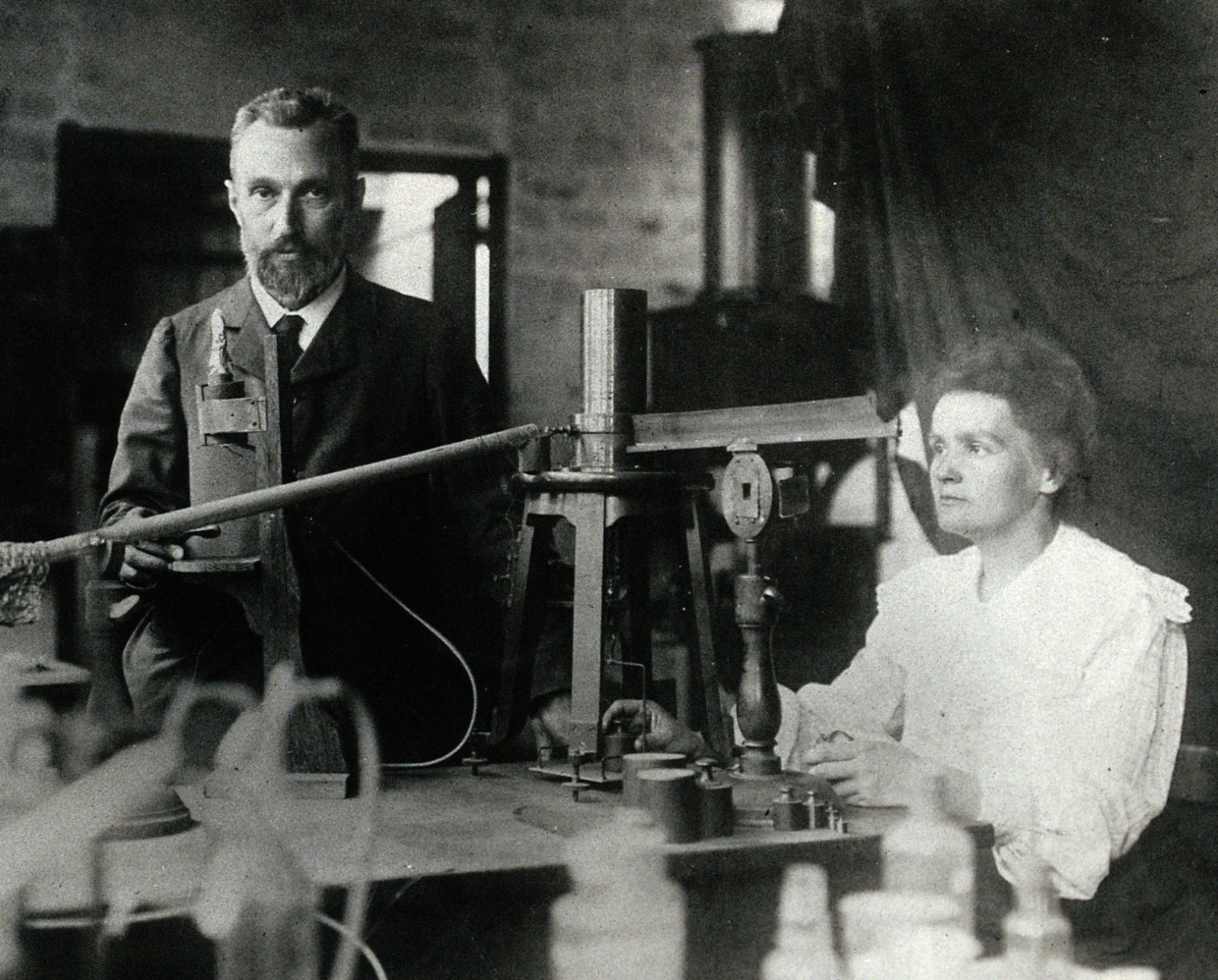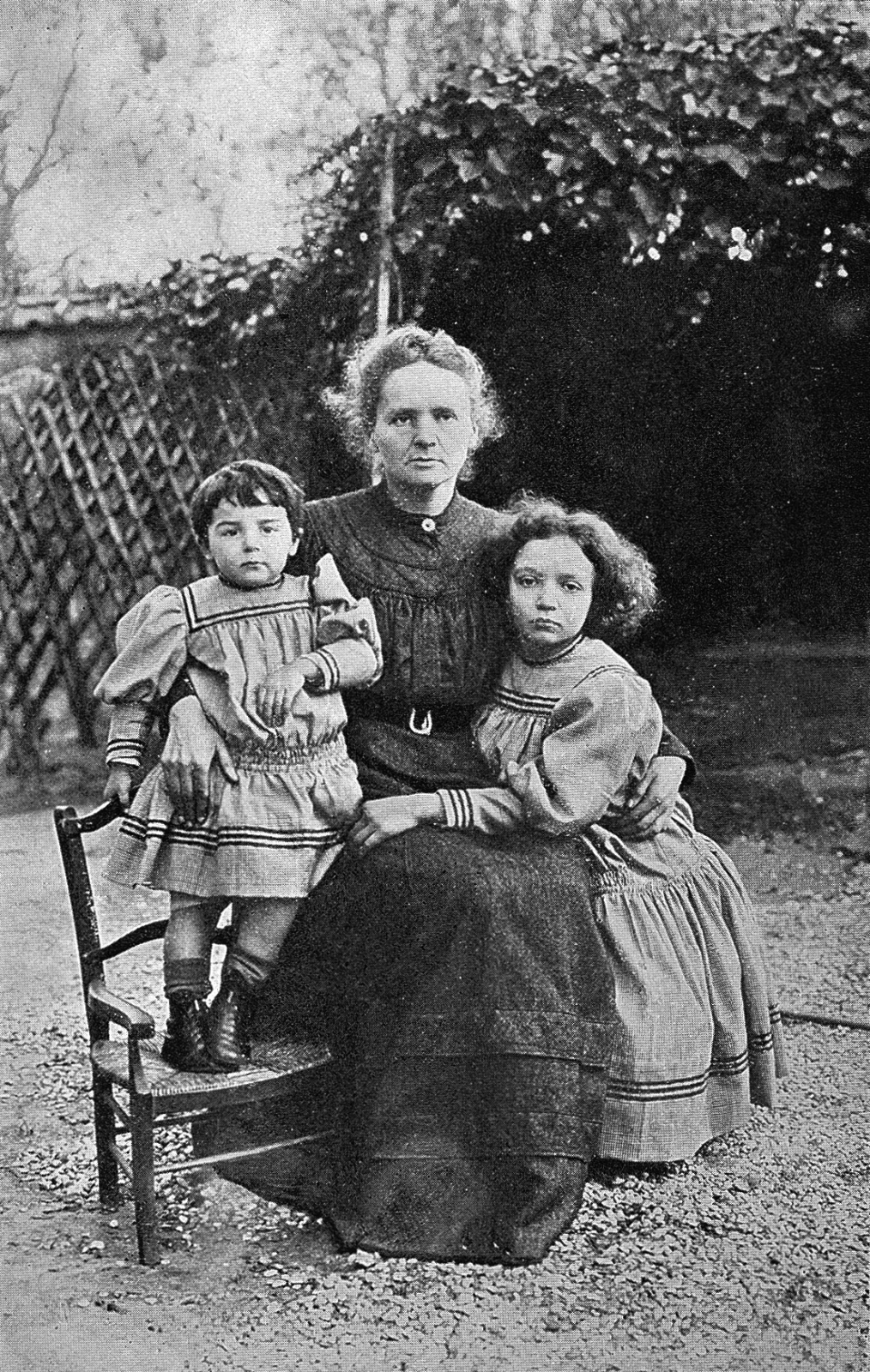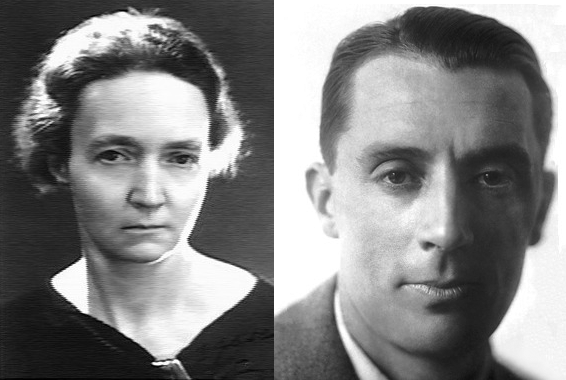Marie Curie, Mother
by Andy Boyd
Today, a most Curious mother. The University of Houston presents this series about the machines that make our civilization run, and the people whose ingenuity created them.
We're all familiar with the name Marie Curie and her pioneering work on radioactivity at the turn of the twentieth century. She won a Nobel prize together with her husband Pierre for their efforts. Actually, she won two Nobel prizes: the first with Pierre, and the second on her own a decade later. But Madame Curie was more than just an eminent scientist. She was also a remarkable mother.

Pierre and Marie Curie in the laboratory. Photo Credit: Wikimedia Commons.
The Curie's had two daughters. Irene, the oldest, was born in 1897 two years after Pierre and Marie married. Daughter Eve was born seven years later. Pierre died tragically shortly after Eve was born, run over by a horse drawn carriage on a wet, slippery street. This left Marie to raise the girls without a father.

Portrait of Marie Curie and her daughters, 1908. Photo Credit: Wikimedia Commons.
Marie wasn't happy with the schooling in Paris at the time, and spent time homeschooling the girls. At one point, she joined a group of distinguished scholars that took turns teaching lessons in their own areas of expertise. Marie taught physics. She also made sure the girls remained healthy and engaged in all manner of physical activity, from hiking to acrobatics.
And her recipe worked. Irene followed in her mother's footsteps. During World War I, at age seventeen, the young woman helped her mother set up field X-ray equipment to aid wounded soldiers, an activity for which she would later receive military honors. After the war she completed graduate studies while working with her mother at the Radium Institute, now the Curie Institute. There she would meet her husband-to-be, Frédéric Joliot. Years later, Irene and Frédéric Curie-Joliot would receive their own Nobel prizes for their research on radioactivity. And that only touches upon the couple's scientific and humanitarian accomplishments.

Iréne Joliot-Curie and Jean Frédéric Joliot. Photo Credit: Wikimedia Commons (Left).Wikimedia Commons (Right).
Daughter Eve's interests leaned toward art and writing. She was nominated for a Pulitzer Prize for war correspondence, and later served as the 'first lady' of UNICEF, where in 1965 she accompanied her husband to the stage where, as executive director of UNICEF, he accepted the Nobel Peace Prize on behalf of the organization. Following her mother's death, Eve wrote a gracious biography about her mother. A reviewer for the New York Times wrote that it "stirs the heart and the mind by a fine counterpoint of sense and sensibility."
It's difficult to imagine the day-to-day life of Marie Curie as a mother. She was by all accounts relentlessly driven by her research, yet raised two outstanding children. By the nature of her work she wasn't always with her daughters and had to rely on care provided by others. I'm sure life was filled with inescapable parent/child squabbles. But her daughters genuinely loved her, personally caring for their dying mother as she grew ill from radiation exposure. It's hard to think of a better testament to their affection.
I'm Andy Boyd at the University of Houston, where we're interested in the way inventive minds work.
(Theme music)
Eve Curie. From the Wikipedia website: https://en.wikipedia.org/wiki/%C3%88ve_Curie. Accessed September 27, 2016.
M. Fox. "Eve Curie Labouisse, Mother's Biographer, Dies at 102." New York Times, October 25, 2007.
Irene Joliot-Curie. From the Famous Scientists website: http://www.famousscientists.org/. Accessed September 27, 2016.
Irene Joliot-Curie. From the Wikipedia website: https://en.wikipedia.org/wiki/Ir%C3%A8ne_Joliot-Curie. Accessed September 27, 2016.
This episode was first aired on September 29, 2016